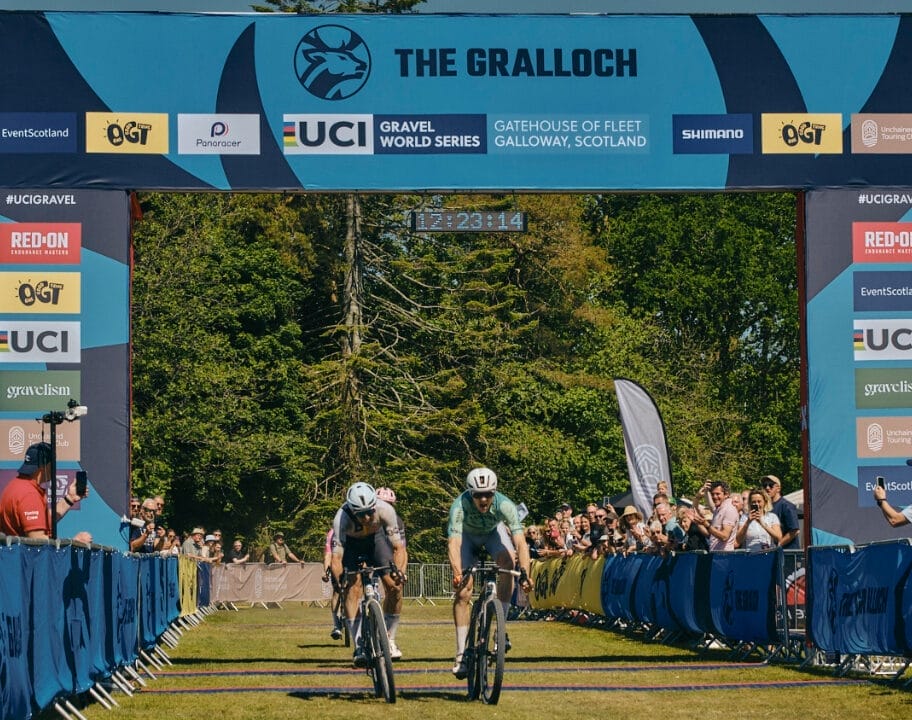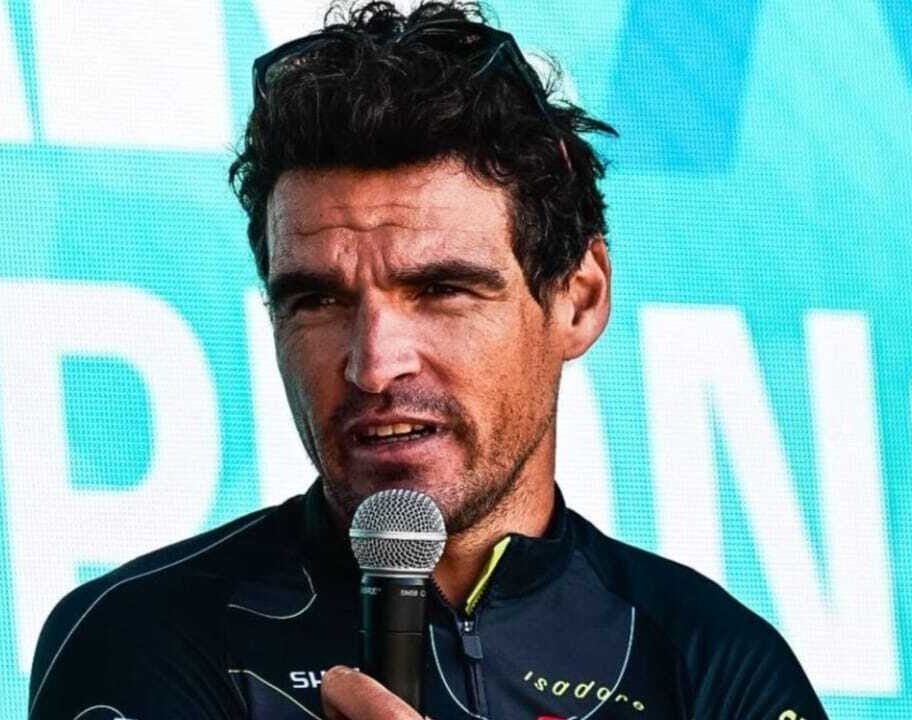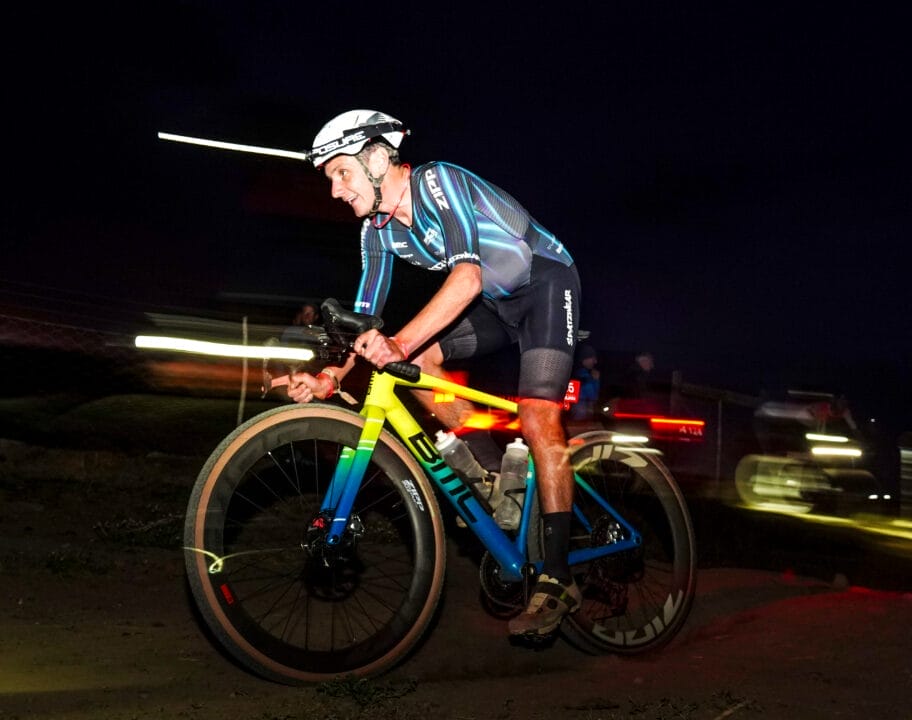Sprinting is not just the ability to kick hard at the end of a ride or race. From launching attacks to closing gaps, it’s a skill that every cyclist should work on. And it’s not an asset reserved exclusively for the genetically gifted, either. You don’t need huge leg muscles or a surplus of fast-twitch fibres to be good at it. There’s a lot of technique and training that can help you boost those peak output numbers.
Whether you’re getting race ready, or just looking to boost your top end speed so you never lose a ‘last one to the cafe stop buys the coffees’ battle on the Sunday club ride ever again. Here’s our top tips to help you improve your sprinting on the bike.
1. Get up to speed by working on your ‘snap’
By snap, we mean the ability to get up to full speed as quickly as possible. Part of this is genetic – you need fast-twitch fibres for this explosive type of acceleration – but it is still something you can improve. For this, choose a slight uphill (around 5% max). Slow to a crawl and proceed to sprint until you’re at full speed. Use both high and low gears depending on whether you’re focusing on brute power or pure snap. This can be a full session in itself or just part of a ride. The more you do it, the more you’ll learn whether you’re a powerhouse who thrives on big gears, or someone better at getting on top of a smaller gear and working down gears as you accelerate.
2. Don’t just rely on your quads
Sprinting is not just about the legs. With a strong grip and an engaged core, you can recruit your glutes and lower back to add significant power to your sprints. Watch how the top pros do it: on the drops, body rigid, every muscle firing. This can be practiced whilst doing the above work on your raw acceleration.
3. Hit the gym
Sprinting is done on the bike, but you can supplement your work on two wheels with work in the gym. Think of it as leg day – maxed out. Use medium weights and focus on fast lifts. Engage your core, glutes and back whether you’re squatting, lunging or doing step ups. Make every rep explosive.
4. Fine tune your tactics to make every watt count
Being savvy saves watts. You can only maintain your peak output for a short period of time, and you only have a limited number of all-out efforts in a ride. So, make them count. Time your effort so that you’re hitting the finish line – or your target signpost or whatever – at maximum speed, not before. If you’re sprinting in a group, then read your rivals, find a strong wheel to follow, and remember: timing is everything.
5. Boost your leg speed
Some riders are able to make up for raw power with sheer leg speed. This is a valuable mid-ride skill – sprinting using fast legs will save energy and mean you burn less of those big watt matches. Try this: find a slight downhill, slow into a medium gear, accelerate hard, and keep pedalling until you spin out. This will improve your efficiency with higher cadences and also work on improving your short-term fuel capacity, or ATP pathway.
6. Practice sprinting from speed
Not all sprints are from a low speed. To get better at that finishing punch, you need to be able to sprint at speed too. There are various ways to train this, but most include either recruiting a friend or someone on a moped for lead-out practice. If you don’t fancy this risk or have a spare person to help you, choose a fast downhill. Accelerate in the saddle, then launch a full-speed sprint from high speed.
7. You still need endurance
When we talk about sprinting endurance, we mean two things: the ability to repeat a max power sprint as many times as possible and how long you can hold that effort. The more sprinting you do, the more this will improve. Take inspiration from Alaphilippe – one of his go-to training sessions involves sprinting at max effort until the director in the car behind him shouts “stop”. This kind of unknown-effort training replicates racing and is great if you have a partner or coach to guide it.
8. Aero is important
Top speed sprinting means drag. When it comes to wind resistance, the more we can reduce this, the faster we can sprint. So, embrace your inner Cavendish or Ewan: get low when sprinting and you’ll soon be going faster. It might take some work – we’re not all as flexible as top-level pros – but every aero gain will see you go faster.
9. Practice sprinting while fatigued ready for finish line antics
We’ve all seen it – long races like Paris-Roubaix or Milan-San Remo, where the expected fast finisher fades, not quite finishing on top. Fatigue changes the sprint. That means it’s absolutely worth training your ability to sprint when tired. End a long ride with a few max efforts when you’re already absolutely blown. It’ll tough your legs and prep you for late-race heroics.
10. Rinse and repeat
Like anything in cycling, becoming a better sprinter takes time. Practice it regularly – it doesn’t need to be the main focus on your rides unless you’re a sprint specialist. But think of it as a tool in your toolbox: it’s worth sharpening. Use the above tips and training sessions consistently to work on it over time.
Sprinting is a valuable skill to have. Even if it doesn’t come naturally, you can improve it over time. Hopefully our tips will give you a boost – just remember, speeds are often at their highest when sprinting so make sure to stay safe when training on open roads. Or, for a more time-efficient (and traffic-free) option, jump on your turbo trainer and let your living room become the launchpad.




